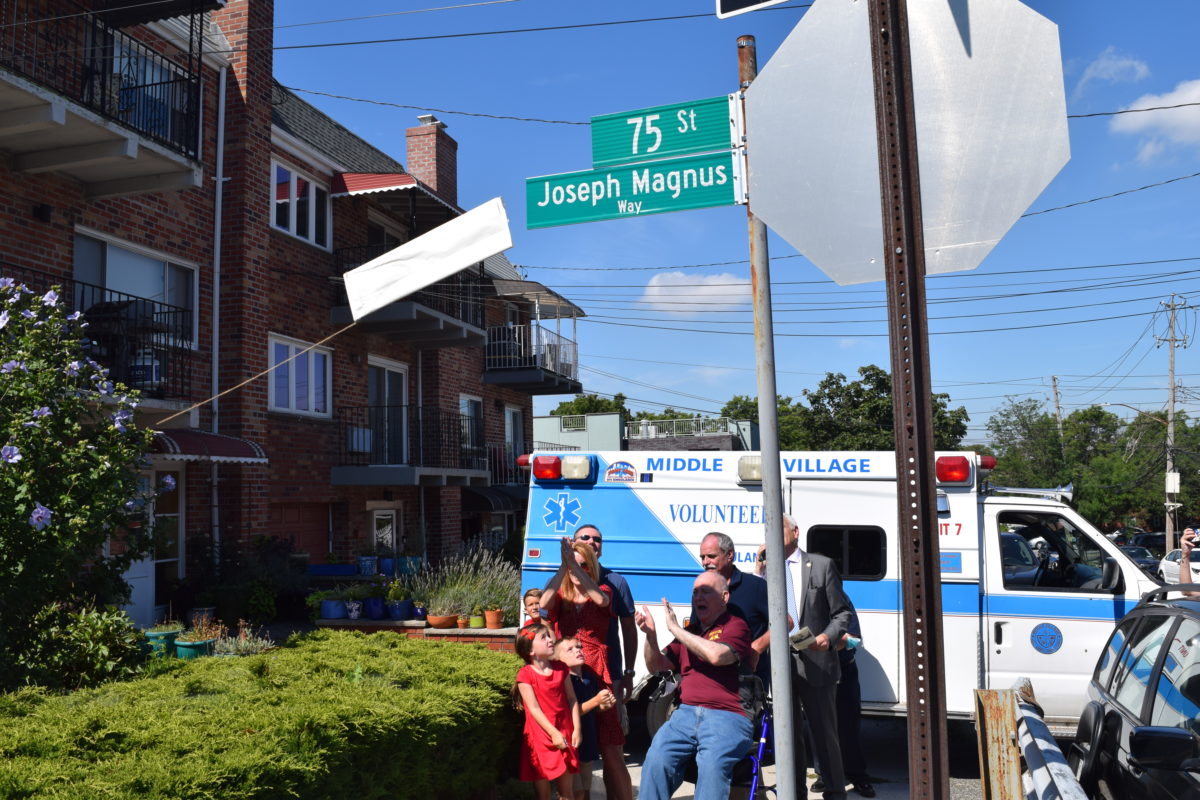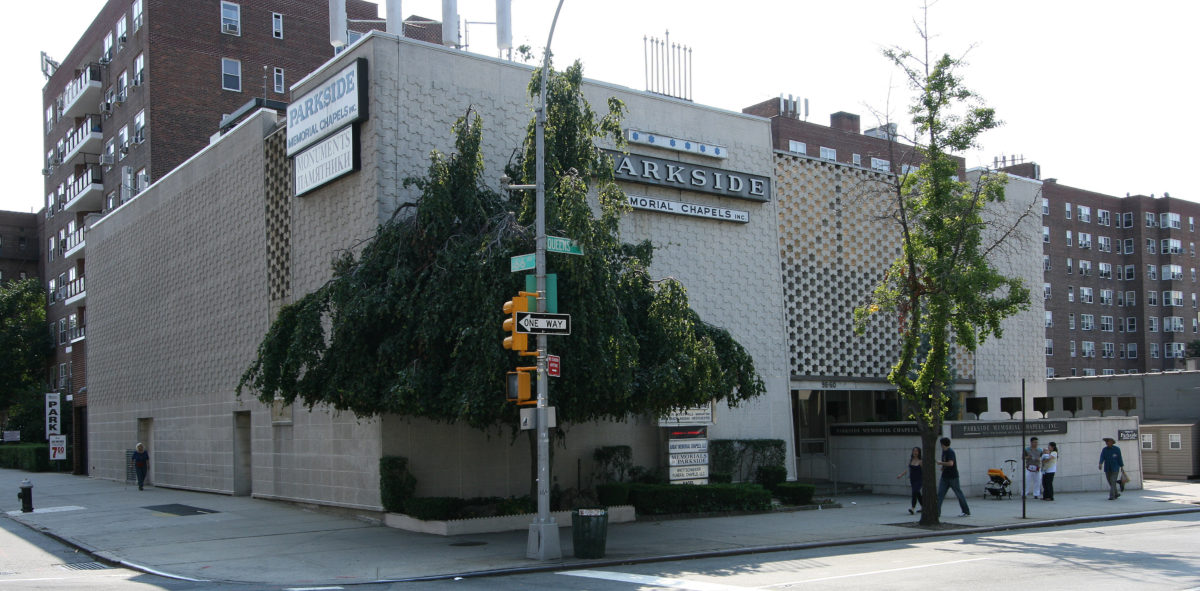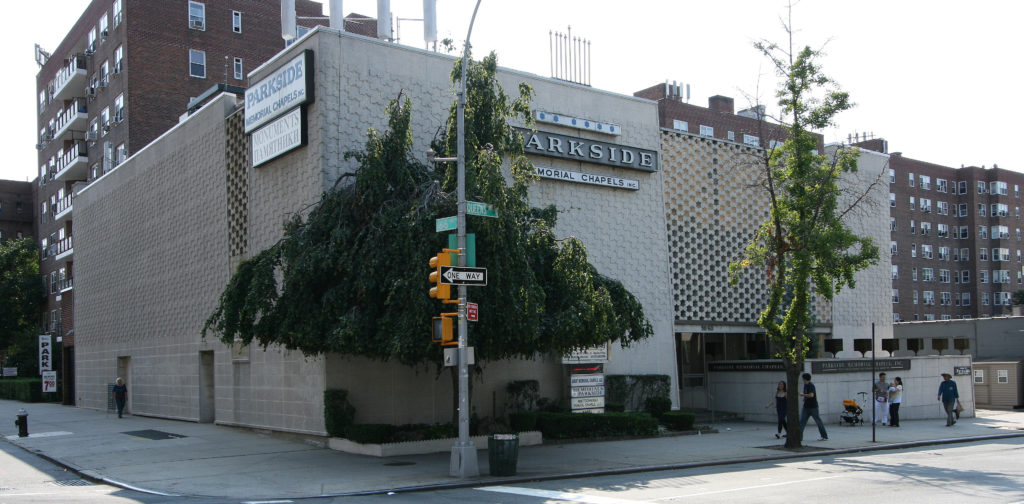Paying homage to local hero with street co-naming
“Joseph Magnus Way” honors his humanitarian spirit
By Stephanie Meditz
news@queensledger.com
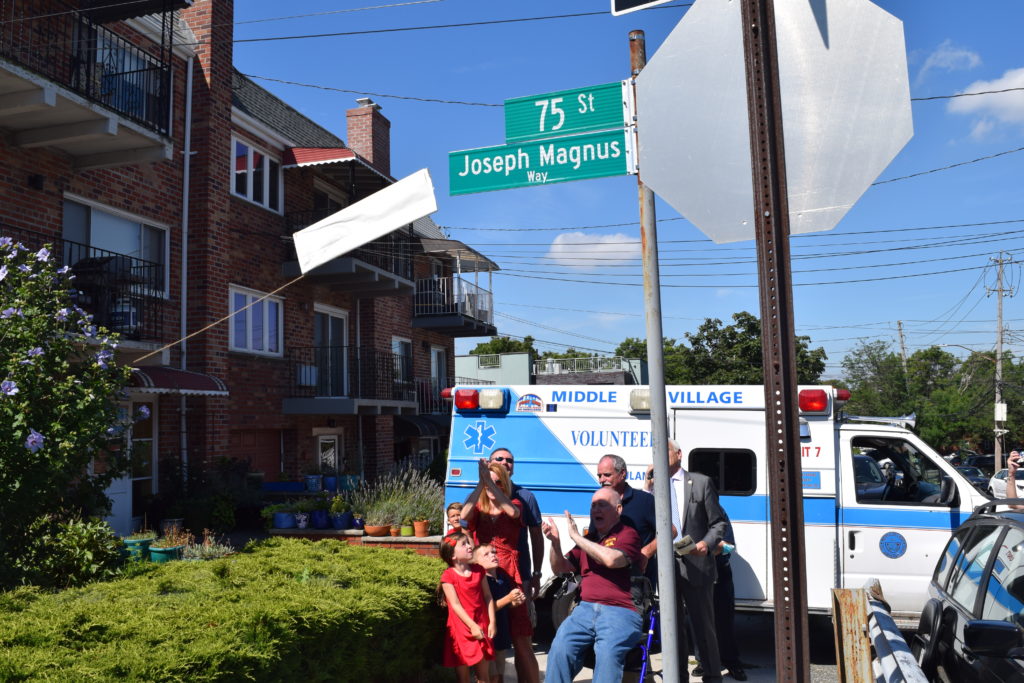
On Saturday, the corner of 58th Avenue and 75th Street in Middle Village was co-named to honor a beloved community member, Joseph Magnus.
Middle Village residents joined the friends and family of Magnus to unveil a new street sign that reads “Joseph Magnus Way.”
Born in Slovakia in 1931, Magnus spent his childhood in the thick of the Second World War.
After he and his family escaped capture by the Nazis, he endured several wounds under the care of his fellow survivors and learned the importance of community service firsthand.
He learned the English language by working as an elevator operator, took computer classes at New York University, mentored community members and co-founded the Middle Village Volunteer Ambulance Corps.
On September 11, 2001, Magnus and the Middle Village Volunteer Ambulance Corps were among the first volunteers at the World Trade Center, where they spent days helping New Yorkers in a time of citywide need.
Michael Michel, president of Christ the King Regional High School, was Magnus’s mentee as a volunteer of the Middle Village Volunteer Ambulance Corps.
“I volunteered and I started on Wednesday nights with Joe Magnus as a trainee,” he said. “He put me under his wing, broke my chops…but he was a driven force.”
After five months volunteering with the corps, Michel ran for first officer under Magnus’s stern instruction.
Six months later, Magnus similarly convinced Michel to run for president of the corps.
Michel testified that Magnus would call former NYS Senator Serf Maltese every day to solicit funding for the corps.
Maltese, who funded several ambulance corps during his 20 years in office, likened Magnus to a drill sergeant in his fundraising efforts.
He said that Magnus not only helped the Middle Village Volunteer Ambulance Corps continue, but he also made sure it was the best-funded ambulance corps in the state.
Magnus was a major force behind the city’s memorandum of understanding to fund all ambulance corps in New York City.
“Nobody hounded me like Joe Magnus,” Maltese said. “My entire staff knew, whether it was Albany or Queens, when Joe was on the phone.”
City Councilman Robert Holden, who presented the co-naming, had similar encounters with Magnus since they met in the late ‘80s.
“He was always challenging me,” he said. “And this is probably why I’m standing here, it’s because of Joe Magnus. He urged me to run.”
Through his many phone calls to Holden’s office, Magnus inspired Holden’s funding of the Middle Village Volunteer Ambulance Corps.
“He was an amazing person. You couldn’t say no to Joe,” Holden said. “Joe would say what was on his mind and he didn’t have a filter.”
Holden also testified to Magnus’ regular attendance at parades and other community events, even in his old age.
“Joe had a heart of gold. He would help anyone,” he said. “He would help a lot of people and he didn’t brag about that part…but he was so dedicated to community.”
Senator Joe Addabbo, who got to know Magnus when he was elected in 2009, spoke of Magnus’s tough, no-nonsense exterior along with his perseverance, advocacy and community service.
“Even though he was not born in America, you’d be hard pressed to find someone more American,” he said.
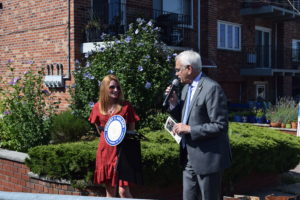
Magnus’s daughter, Tanya, described her father as having a “rough exterior, but a heart of gold” in an article.
Magnus’s daughter, Tanya Magnus-Hoos, spoke of her father’s commitment to the American ideal of building a better life in this country.
“Joe Magnus was a capitalist and a patriot,” she said. “Every time something good happened in my life, like a promotion or a raise, he would be my first call. He’d get on the phone and say to me, ‘That’s great. Good country, huh? Let’s go on Grand Avenue and sing God Bless America.’”
“And I miss those moments,” she continued. “But what I also look forward to with hope and anticipation is that someday, when something good happens in [my children’s] lives and they call me, I can tell them, ‘That’s great. Good country. Let’s go sing God Bless America on Joe Magnus Way.’”
Magnus was notorious for sounding the ambulance’s loud, unmistakable horn at all hours of the night.
At the street co-naming, Joseph Campisi from the Middle Village Volunteer Ambulance Corps sounded the horn in his honor.


